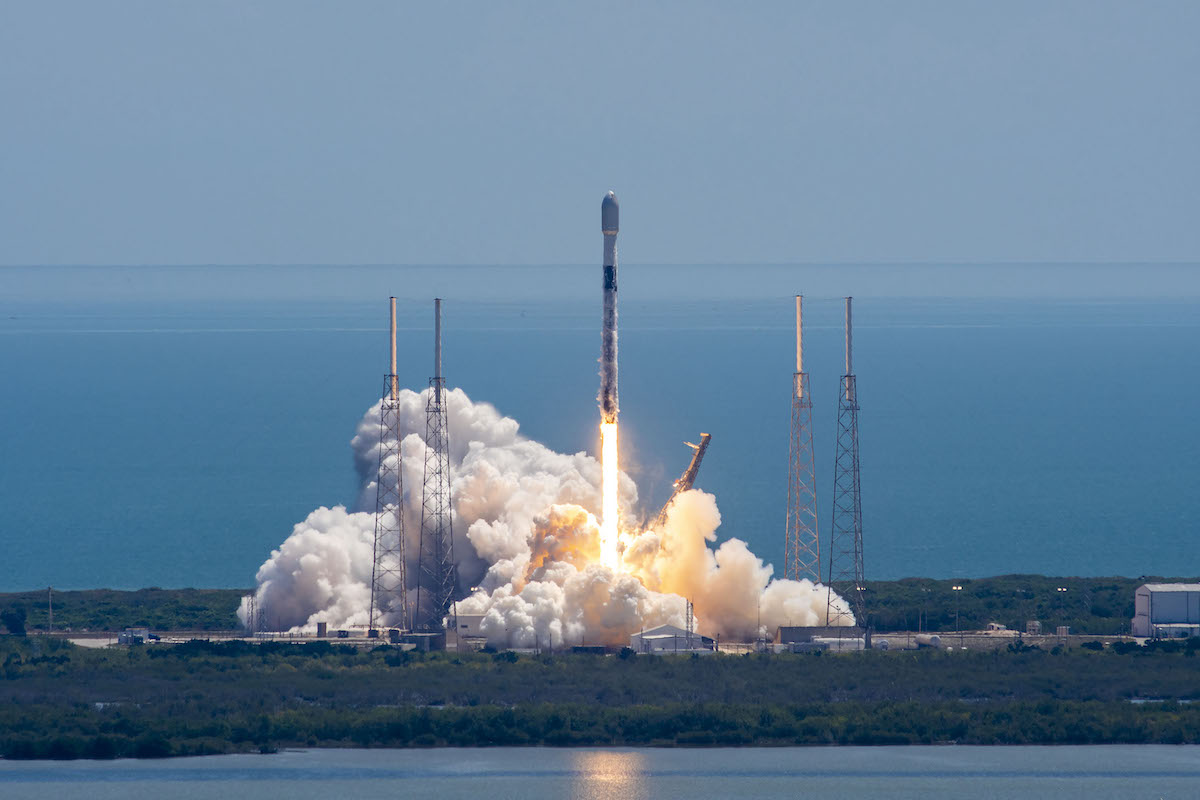
Firefly Aerospace has selected SpaceX’s Falcon 9 rocket to launch the company’s first commercial lunar lander mission in 2023 with 10 NASA-sponsored research payloads.
The Blue Ghost lander, which Firefly will build at its Texas manufacturing center, will aim for landing in the Mare Crisium region on the near side of the moon. NASA awarded Firefly a $93.3 million contract in February for the Blue Ghost mission, the sixth lunar lander flight in the agency’s Commercial Lunar Payload Services program.
The CLPS landers will be robotic precursors for future human explorers flying to the moon as part of NASA’s Artemis program.
“Firefly is excited to fly our Blue Ghost spacecraft on the highly reliable Falcon 9, which will deliver NASA instruments and technology demonstration payloads that support NASA science goals and NASA’s Artemis program,” said Shea Ferring, Firefly’s senior vice president of spacecraft.”
The Falcon 9 rocket will deploy the Blue Ghost spacecraft on a trajectory to the moon that minimizes requirements on the lander’s on-board propulsion system, according to Firefly. That will permit the lander to deliver more than 330 pounds, or 150 kilograms, of payload to the surface of the moon.
NASA’s contract with Firefly, based in Cedar Park, Texas, allows the space agency to fly 10 research payloads to the moon totaling about 207 pounds, or 94 kilograms, the majority of the Blue Ghost lander’s payload capacity.

The payloads include scientific investigations examining the stickiness of lunar soil and dust, laser retroreflectors to precisely measure the distance between the Earth and the moon, an X-ray imager to observe the interaction of Earth’s atmosphere with the solar wind, and instruments to probe the interior of the moon.
The Blue Ghost lander will also deliver stereo cameras to study how the spacecraft’s rocket exhaust interacts with the lunar surface, and technology demonstration payloads to test a radiation-tolerant computer, an electrodynamic dust shield, a “PlanetVac” device to collect lunar soil samples, and a receiver that will attempt to discern GPS signals at lunar distances.
The solar-powered Blue Ghost lander will operate while the sun is up at the Mare Crisium landing site, equivalent to 14 Earth days.
Firefly joins Astrobotic, Intuitive Machines, and Masten Space Systems as CLPS competition winners. NASA has awarded two missions each to Astrobotic and Intuitive Machines, and issued one lunar lander order to Masten and Firefly.
Five of the NASA-chartered CLPS landers are booked for launches on SpaceX Falcon 9 or Falcon Heavy rockets. A commercial lander developed by Pittsburgh-based Astrobotic is scheduled to launch on the first flight of United Launch Alliance’s Vulcan Centaur rocket at the end of this year.
“The Blue Ghost mission will include delivery of NASA payloads that will support scientific lunar research and will contribute to developing a sustainable presence on the moon as part of the Artemis program,” said Tom Ochinero, SpaceX’s vice president of commercial sales, in a press release. “We’re honored Firefly selected Falcon 9 for launch.”
“Firefly is excited to leverage the performance and reliability of Falcon 9 to propel Blue Ghost on the first phase of its journey to the moon,” said Tom Markusic, Firefly’s CEO.
Firefly is also developing a family of small and medium-class launch vehicles. The company’s first rocket, named Alpha, is in final testing before liftoff on its first flight from Vandenberg Space Force Base, California. The Alpha rocket is not powerful enough to boost the Blue Ghost lander to the moon.
Firefly said launches of its larger Beta rocket, which is in an earlier stage of development, could deliver future Blue Ghost landers on trajectory toward the moon.
Email the author.
Follow Stephen Clark on Twitter: @StephenClark1.
